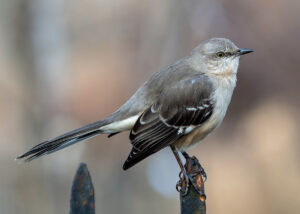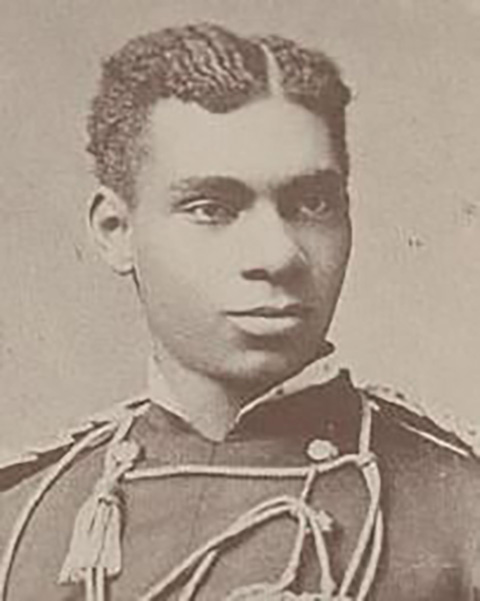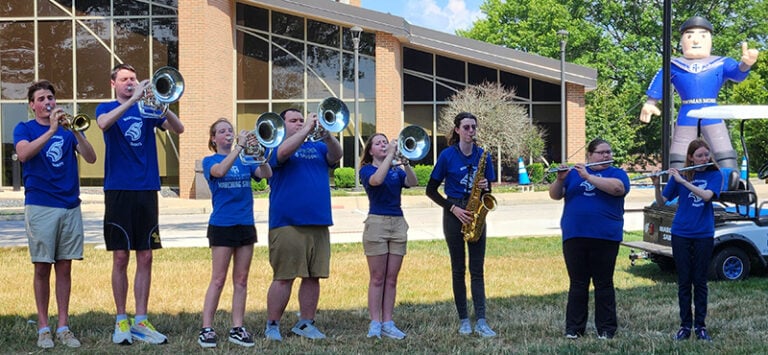By Howard Whiteman
Murray State University
There he goes again. Not even close to daylight, and the mockingbird is outside my window, producing his amazing repertoire of calls. Twelve different calls that I have hear so far, not bad but not even close to the extreme. For most of the calls, or songs as they are described by birders, he is clearly copying those of other local birds, hence the name of his species. You can hear the songs of cardinals, chickadees, titmice, robins, and many other species coming from this single bird, which must confuse the heck out of the other birds in the area. Or maybe they just get used to it.
But mockingbirds don’t mock; they aren’t making fun of their neighbors. Instead, males recycle calls from other species to entice females to their breeding territories. Males with the most calls in their routine attract the most mates, and natural selection favors males that can remember and produce more and more calls. Males may produce as many as 17 different calls at one time, but they add new songs to their show throughout their lives, and may learn as many as 200 new songs, many of which mimic other species.

The nighttime singing that I observed was an indication of an unmated male. Males without mates sing more than males at all times of the day, but particularly at night, and all mockingbirds sing more during a full moon.
Northern mockingbirds, which is the full name of the species, typically call from February through August, and again in the fall from September through November, but those two time periods are very different. In the spring and summer, males are mostly trying to attract mates and in the fall he is setting up a winter territory. Males have different sets of songs in each season. Females will occasionally call too, but very quietly in the summer and often only when the male is away from the territory. In the fall, females are much more vocal, perhaps to help set up and maintain the winter territory.
Northern mockingbirds are also easy to identify by sight, as they are medium-sized birds, a bit bigger than a robin, that are grayish above and whiter below, with a long tail and white wing bars. They are very territorial, and often chase birds, cats, dogs, humans, and other animals that stray too close to their nests.
Mockingbirds are found throughout much of the continental U.S. and eastern Canada, much of Mexico, and in many Caribbean Islands. It is also now found in Hawai’i, unfortunately, where it was introduced in the 1920s. Not surprisingly given its broad range and raucous, mimicking calls, it is the state bird of Arkansas, Florida, Mississippi, Tennessee, and Texas.
Mockingbirds are very common near homes, but they don’t visit feeders very often. Instead, they are more likely to be attracted to fruit trees or berry bushes, such as blackberries, as well as open lawns, which often provide abundant insect prey.
Amazingly, humans used to keep mockingbirds as pets. In the 1800s, so many mockingbirds were captured as pets that the species nearly disappeared along the east coast. People took nestlings out of nests and trapped the adults, selling them in cities where the best singers would bring $50, which would be over $1600 today.
Luckily for mockingbirds, and those of us that enjoy them in the wild, the Migratory Bird Treaty Act of 1918 put an end to the unsustainable use of songbirds and many other bird species.
Thomas Jefferson famously owned pet mockingbirds. Jefferson, who was arguably one of the best naturalists of all former Presidents, had a particular fondness for birds. He kept a variety of live birds at his home, including canaries, goldfinches, and parrots, as well as a collection of over 200 preserved bird specimens.
Although Jefferson owned multiple mockingbirds, he only mentions one by name in his diary, which was “Dick”. Dick was kept in a cage in his study and would sing to him as he worked, occasionally sitting on his shoulder or perching on his finger.
Jefferson thought of mockingbirds as a symbol of freedom and democracy. He once wrote that mockingbirds were “the only bird which sings on the approach of the night,” as if to suggest that mockingbirds would stand up for freedom and against the darkness of oppression when other birds would not. He also believed that the mockingbird’s mimicry skill was a symbol of the freedom of speech, which was and continues to be a fundamental value of our society.
It is sort of funny to think about mockingbirds as symbols of freedom and democracy, but after reading about Jefferson’s passion for them, I have to agree. I will think about them differently now, soaking in the varied songs of the mockingbird who is high atop the tree that appropriately sits near my American flag.
You have to wonder what Jefferson and his contemporaries would think about our current political discourse. He might disagree with a lot, but I bet he would agree that having vibrant communication with each other, just as mockingbirds do, is one of the best things we can do for our democracy.
“Let Freedom Ring” has new meaning for me now, and hopefully the next time you hear a mockingbird, you will think the same thing too.
Dr. Howard Whiteman is the Commonwealth Endowed Chair of Environmental Studies and professor in the Department of Biological Sciences at Murray State University.

















